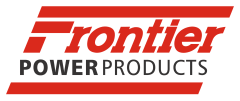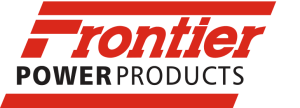Reprinted from John Deere’s “Sink or Swim News”, April 2008.
We often get questions concerning how a vessel is going to perform with our engines. There are ways to predict this based on the type of vessel, weight, engine size, and propeller.
The performance of an engine in a boat is linked to the hull type, hull weight, boat use, marine gear ratio and propeller. An engine should not be sold or serviced without considering the total engine operating environment. A boat and engine can have outstanding performance when used for one type or service and be totally unacceptable when switched to another use.
When a customer buys an engine or a boat, they have expectations for engine and boat performance. A tow boat operator may be looking for good fuel economy, durability, reliability, and low rebuild and maintenance costs, where a charter fisherman might be interested in top end boat speed, low vibration, low noise level, quick response, and no smoke. Both are concerned about initial cost and operating cost. Selecting the right engine and drive train is the best way to meet and exceed the customer’s expectations. Improper engine selection or installation can make it all but impossible to satisfy the customer.
There are a wide variety of hull designs, but hulls with Deere marine engines will usually fall into two types, planing and displacement hulls. A hybrid of these two is called a semi-displacement hull. The type of hull design greatly impacts how the vessel will operate and what type of performance can be expected.
Displacement hulls push through the water or displace water when they run. Everything from canoes to ocean liners are displacement hulls. The most common displacement hulls will be tugs, fishing boats, and most large vessels.
The two major factors that determine the speed of a displacement hull are the hull surface area in contact with the water or wetted surface and the hull wave making resistance. Other minor considerations are appendage drag and surface tension.
As the weight of a vessel is increased, the hull draft or depth in the water increases, increasing the wetted surface. Increasing the weight or load will increase the horsepower required to maintain a constant boat speed. Larger hulls have more wetted surface area and require more power than smaller hulls. Operators who add to the boat’s load or weight should expect to see a decrease in boat speed.
The maximum speed of displacement hulls was first predicted for British Men O’War by Anthony Deane in 1670 using the Speed-Length formula. Deane correctly surmised that maximum displacement hull speed is determined by the length of the vessel and the wave making resistance of the hull. Deane’s formula uses the length of the vessel measured at the waterline (LWL) and S/L Ratio to calculate maximum possible displacement hull speeds.
Displacement hulls typically have a S/L ratio of 1.34 or less. Increasing the horsepower in a displacement hull makes the hull “push” the bow wave. As the distance between the bow wave and stern wave increases, the vessel stern drops into the trough between the two wave crests and the front of the boat rides up on the bow wave. Some speed increase above the S/L Ratios listed is possible, but large increases in power are required for very small speed increases.
Semi-displacement hulls are similar to displacement hulls, but with a hull design that smoothes out the water flow around and under the hull. Some elements of planing hull design have been introduced to make this type hull a hybrid of displacement and planing hull types. Semi-displacement hulls can run at S/L ratios up to 3.0. Most small and medium sized “displacement” hull designs are really semi-displacement type hulls for greater speed capability.
Planing hulls generate hydrodynamic lift that allows them to ride on top of the water. As they lift out of the water, the wetted surface area is reduced and speed increases. By riding on the surface they do not make large waves like displacement hulls, and any increase in power results in a corresponding increase in boat speed. A planing hull’s performance is limited by available horsepower and stability.
The S/L Ratio can be used to describe planing hull performance but the speed is not limited like displacement hulls. At slow speeds with a S/L ratio below 1.0, a planing hull performs as a displacement hull. Between the S/L ratios of 1.0 and 3.0, the planing hull is in transition from displacement to planing. At S/L ratios above 3.0 the planing hull is “on plane”. As the vessel is moving from displacement mode to planing, a planing hull will go from a level trim angle to a 4° or 5° front up or bow high angle. As the boat comes on plane, the bow drops a couple of degrees. Boaters describe this up and down motion as “getting on plane” or “getting over the hump”. A planing hull that is under-powered or overweight won’t “get over” and runs at an uncomfortable attitude in the water. In most cases it’s best to avoid selling engines into marginal power situations in a planing hull. Many customer complaints of low engine power are the result of not having enough power to get the boat on plane.
Adding weight to a planing hull increases the draft and wetted surface, thereby reducing boat speed. When overloaded a planing hull may not generate enough lift to “get up on top” and it will remain in the slow speed displacement mode.
Low powered planing hulls may be classified as semi-displacement hulls because they do not have the power to get on plane. Trawler yachts, replica tug boats, and even some large cruisers are in this group.
The next step in predicting vessel performance is predicting the hull performance. Boat speed is the most critical factor in matching the engine, propeller, and gear ratio. This topic will be discussed in more detail in the next edition of Sink or Swim News.
Calculating the Maximum Boat Speed
The maximum potential boat speed is calculated as: Boat Speed (knots) = (square root of LWL) x S/L Ratio where the boat speed is in knots and the LWL (Length at the Waterline) is in feet.
A 64 foot LWL displacement hull fishing boat has a maximum speed capability of (square root of 64) x 1.34 which equals 10.7 knots. A 100 foot displacement hull fishing boat has a maximum speed potential of 13.4 knots whereas a 100 foot barge could only go 10 knots. The formula only predicts maximum speed potential. The 100 foot boat would require more horsepower to achieve its maximum potential speed than the 64 foot boat. The table lists the S/L ratio limits for different types of displacement hulls.
| Displacement Hull Type | S/L Ratio Limit |
| Barge | 1.00 |
| Freighter | 1.20 |
| Ferry boat | 1.34 |
| Fishing boat | 1.34 |




